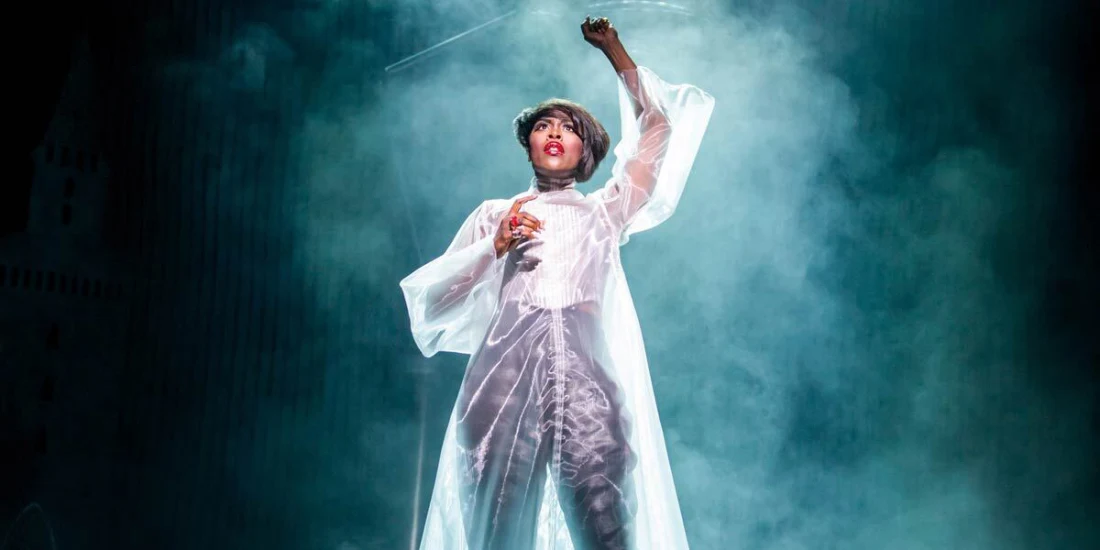Gloria Onitiri on finding her Fairy Godmother magic in 'Andrew Lloyd Webber's Cinderella'
We all wish we had a Fairy Godmother. This fantastical character changes peoples lives in a few moments — and the famed Fairy Godmother trope is often associated with Cinderella.
But in Andrew Lloyd Webber's Cinderella, the Godmother doesn't only focus on a person's appearance. She connects with Cinderella and Prince Sebastian on a deeper level, encouraging them to see inside themselves.
“[The Godmother’s] whole role is she can make you look like what you want to look. The question really falls down to whether you want to change,” said Gloria Onitiri, who plays the Godmother in the new take on the classic fairy tale in the West End..
We spoke to Onitiri about the darker elements of the godmother role and how Cinderella writer Emerald Fennell speaks to 21st-century beauty standards in this new adaptation.
Cinderella is at the Gillian Lynne Theatre.
Cinderella tickets are on sale now.
You’ve been in many shows over the years. How do you bring those different experiences to portray the Fairy Godmother?
As the Fairy Godmother is only in the show for a short period, having a lot of stage experience and knowing how to come in at a point in a show where an audience has relationships with characters is important. The energy builds, adrenaline is high, and having previous experience enables me to come in at the pinnacle of where the adrenaline is.
I think that’s the trick with playing the Fairy Godmother. It’s really not about necessarily the interpretation of the role but how you command the space in a way that the space hasn’t been commanded before in the show. What the Fairy Godmother is reflects how Emerald [Fennell] has written it — that’s what makes it darker and grittier. It’s less what I’m doing personally, but what I bring to it is the ability to capture the audience in a slightly different world.
What goes into the spectacular transformation scene before Cinderella goes to the ball?
The transformation scene takes a whole team of people backstage! My job actually in that moment is to distract the audience and to remain onstage whilst that’s all happening. It’s difficult for me because I have the job of keeping people entertained.
This Fairy Godmother doesn’t just change Cinderella’s appearance; she does a lot more for Cinderella. How does this Fairy Godmother explore how we see beauty today?
I don’t think she thinks anyone looks terrible in the way they really look. For her, the game is more about feeding off people’s insecurities. She’s a magpie. She enjoys the game and the challenge.
When you look at modern day beauty, she’s saying what every plastic surgeon would probably say. She’s saying “I think you look great the way you are but if you really want this, I can do it for you, as long as you’ve thought it through.”
From an audience perspective, looking from the outside, the question that’s asked is: “Do we need to change ourselves or are we alright the way we are?”, because it’s what’s inside that counts. To truly see someone, you need to see them from the inside before you see the outside.
There’s a poignant moment the Fairy Godmother has with Sebastian when she tells him he’s failed to see what was there. He’d never seen her true self because he couldn’t recognise it even when she’d changed her outer shell. That’s the thing you’re looking for. That’s the message in there that Emerald was trying to get out.
Photo credit: Gloria Onitiri (Photo courtesy of production)
Originally published on
